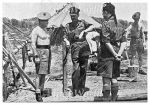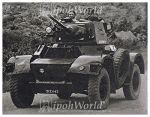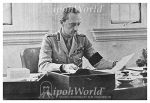We've tried to ensure the information displayed here is as accurate as possible. Should there be any inaccuracies, we would be grateful if you could let us know at info@ipohworld.org . All images and content are copyright.
(Please click on the thumbnail for a bigger image.)
General Sir Gerald Templer GCMG KCB KBE DSO High Commissioner Of The Federation Of Malaya With Video






The first omage (left) from the National Archives shows General Sir Gerald Templer, recognized as an able co-ordinator, replaced Sir Henry Gurney as High Commissioner of Malaya in February 1952 after Gurney was murdered by Communist Terrorists (CT's) on 6 October 1951, on the road from Fraser's Hill. At that time, morale was low in Malaya after four years of an apparently unsuccessful attempt to overcome the Communists. Nonetheless, Templer continued with Gurney's policies, but based on the idea that the war could only be won by the government by first winning the 'hearts and minds' of the citizens. It was not long before he put the Communists on the defensive.
When Templer first arrived in Malaya in 1952 he found that the “New Village Programme” or “Briggs Plan” initiated by Lt General Sir Harold Briggs, Director of Operations, who, between 1949 and 1952, had regrouped and transferred about a million Chinese rural dwellers into over 600 new settlements (‘The New Villages’). These were surrounded by guarded perimeter fences of double-barbed wire and subject to a curfew between the hours of 6pm and 6am and, at one stroke were successfully meeting their objective of cutting-off food supplies to the Communists. In addition, some 10,000 discontented Chinese immigrants had been repatriated to China removing them as a future source of problems for Malaya.
In his first year as both Director of Operations and High Commissioner (providing him with the highest level of both military and civil power), he introduced: local elections; village councils; Chinese citizenship in which over half the population was enfranchised; a merger of the War Council with the more representative political organ, the Executive Council; and provided the first opening for Chinese in the ranks of Malayan Civil Service.
On the civil side he also took the bold step of supporting the idea of introducing a system of nationwide-wide elections to replace the wholly nominated Legislative Assembly, thus indicating to the population that he was supportive of their eventual desires for Independence and thereby further gaining their support to rid the country of the Communist threat.
Militarily, Templer, the “Tiger of Malaya” also embarked on a new armed push, marked by a series of highly successful operations, and aided by the arrival of fresh troops from the Commonwealth countries of Australia, East Africa, Fiji, and New Zealand. Consequently the combination of the Briggs and Templer strategies together, the government started, for the first time, to overcome the Communists who, by 1953, had lost the initiative, which they were never able to recover.
Consequently, taking the improved situation into account, Sir Arthur Edwin Young, Commissioner of Police recommended, in 1953, that ‘White’ or ‘Safe’ areas be designated which were considered free of terrorist activity and could therefore have relaxed restrictions on food and travel. This was considered by Templer and after consultation the first ‘White’ area was declared in Malacca on 3 September 1953. It included one-third of the State containing 70,000 Chinese and 76,000 Malays. In his address to the people of Malacca, Templer said:
“Everyone in this White area will be able to take out a proper mid-day meal to their tapping, their padi field or their garden. They can take food in and out of their village without restriction, or the need for a permit. No one will be searched for food at the village gates.”
What a change that must have been from strict restrictions on food, communal cooking, darkened empty streets and the curfew which the New Villages suffered under the Briggs Plan.
Perak however, a hotbed of Communist activity, took rather longer to win its ‘White’ areas, but as each one was declared it was an even greater carrot for the local people in the ‘Black’ areas to shun the Communists in an effort to win ‘White’ status. This support from the people, coupled with Templer’s other military strategies of employing close air support, helicopters, jungle forts, winning over and protecting the Orang Asli from the terrorists and deep patrols into the jungle by specialist forces, both military and police, continued to drive the Communists deeper and deeper into the jungle. The battle was being won and consequently, when Templer left Malaya in May 1954 his policies continued to be followed, the first nation-wide elections taking place in 1955.
The remaining inages are donated by Ipoh Remembered who describes them thus:
"Image 2 (top centre).
The is second photograph was not taken in Ipoh: Templer was in Johore visiting the Cameronians Regiment. The lads in deshabille I can no longer identify but the colonel with the DSO and his back to the camera was, I think, Bill Henning. The photograph was taken April 3rd, '52, before lunch with the lads.
Image 3 (top right).
"The third photograph was not taken in Ipoh. It shows Gerald and his wife, Edith, in an armoured car. It was taken in May of '52, near Kulim. I believe it appeared at the time in the London papers, but the print I've attached is uncropped.Image 4 (bottom left).The fourth image is a photograph taken at the Anderson School in Ipoh, April 15, 1954, not long before the Templers left Malaya. The boys are in primary classes but their part of the school wasn't yet named after Cator Avenue. The boy whose face you can see was seven years old, likely in Standard 1. I can't recall his name but perhaps someone who sees the photograph can supply it."Image 5 (Bottom centre)."The fifth image is a scan of the cover of Time magazine, issue dated December 15, 1952. Note the barbed wire."
Image 6 (Final)."The final photograph was not taken in Ipoh: Templer was appointed High Commissioner in January, 1952 and arrived in Malaya in early February. Here he is seen at his new desk in KL circa February, '52."
To read more about The Briggs Plan / New Villages, click here.
To read about the Malayan Emergenc, click here.
To read more about the background of the Orang Asli people, click here.
To view details of Fort Brooke and Roy Follows click here.
Click here for Fort Chabai Scenes
Click here for Fort Dixon Scenes
To read more about Sir Arthur Edwin Young, click here.
To see more about ‘White’ and ‘Black’ Areas, click here.
To see photographs and details of The First Federal Elections and the Security of the Ballot Boxes, click here